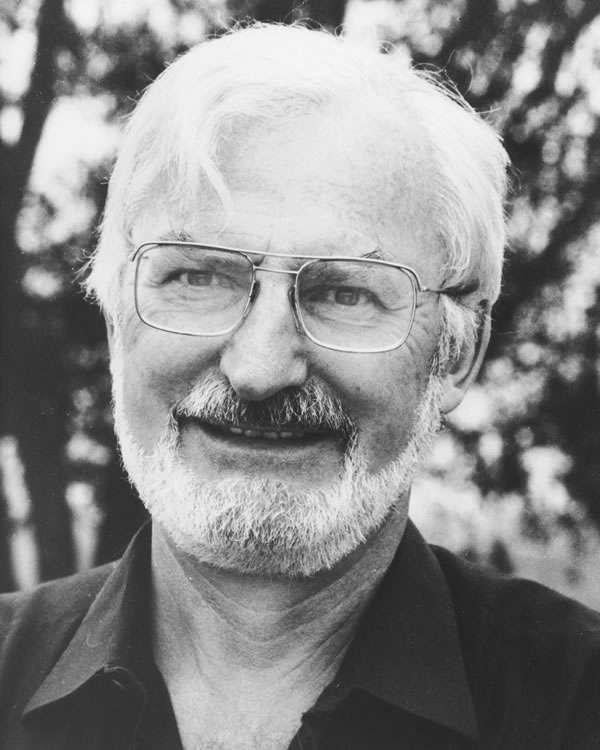Heinrich Rohrer (1933–2013)
Physicist

Heinrich Rohrer was born on 6 June 1933 in Buchs in the St. Gallen Rhine Valley, where he completed his obligatory schooling.
He attended the Juventus Institute in Zurich from 1948 to 1951.After completing the Matura (Switzerland's school-leaving certificate), he studied physics under Georg Busch, Wolfgang Pauli and Paul Scherrer in the Mathematics Department at ETH Zurich from autumn 1951 to autumn 1955.
Superconductivity research
As a PhD student, he then began researching the mechanical properties of superconductors in the transition to superconductivity and, from June 1957, volume change in superconductors under the supervision of Professor Peter Grassmann at the Institut für kalorische Apparate und Kältetechnik (Institute of Calorific Instruments and Cooling Technology). He eventually studied the electronic properties of superconductors in a research project headed by private lecturer Jörgen Lykke Olsen.
In February 1960, he completed his doctorate with the dissertation Druck- und Volumeneffekte in der Supraleitung ("Pressure and Volume Effects in Superconductivity") under Professor Grassmann (supervisor) and Jörgen Lykke Olsen (co-supervisor).
Research on magnetic resonance
Initially continuing as a scientist at ETH Zurich, Rohrer moved to Rutgers University in New Brunswick, New Jersey (USA) for a two-year research stint in the autumn of 1961. In 1963 he was offered a position at the IBM Research Laboratory in Rüschlikon by the then Director Ambros Speiser, where, following projects on Kondo systems and antiferromagnetism, he began to specialise in critical phenomena that occur in magnetic phase transitions. From 1974 to 1975 Rohrer spent a research year at the University of California, Santa Barbara, where he intensified his knowledge in the field of nuclear magnetic resonance (NMR).
Developement of the scanning tunnelling microscope
Towards the end of the 1970s, he turned his attention to researching semiconductor surfaces. In 1978 he urged the Research Laboratory's Direction to offer the budding physicist Gerd Binnig a position at the IBM Research Laboratory. By 1981 Rohrer and Binnig had co-developed the scanning tunnelling microscope (STM) with the aid of other researchers, including Christoph Gerber and Edmund Weibel. The STM enables surfaces to be displayed at atomic level. The scientists therefore triggered a revolution in surface physics as, thanks to the variation of the tunnel current between the probe tip and the surface structure, the instrument helped them to produce the first atomic image. This opened up completely new fields in research on the structure of matter.
Issue of a patent
In 1979 Binnig and Rohrer applied for their first patent for a "device for scanning-like surface studies exploiting the vacuum tunnel effect at cryogenic temperatures". However, they made a series of improvements and conducted the first successful experiment to demonstrate a distance-dependent tunnel current at the research laboratory in Rüschlikon on 18 March 1981.
Awards
In 1984 Rohrer and Binnig were awarded the King Faisal Prize and the Hewlett-Packard Europhysics Prize for their development. Two years later, they won the external page Nobel Prize in Physics for their invention of the scanning tunnelling microscope. They shared the award with the discoverer of the electron microscope, Ernst Ruska. The same year, Heinrich Rohrer was named an IBM Fellow – the company’s highest technical accolade.
These were followed by additional awards and honours, including:
- Cresson Medal of the Franklin Institute, Philadelphia, USA (1987)
- Honorary doctorate from Rutgers University, New York, USA (1987)
- Foreign Associate of the US Academy of Sciences (from 1988)
- Honorary doctorate from the Université II de Marseilles, France (1988)
- National Inventors Hall of Fame, Akron, USA (1994)
- Tsukuba University, Tsukuba, Japan (1994)
- Goethe University Frankfurt, Frankfurt am Main, Germany (1995)
- Tohoku University, Sendai, Japan (2000)
- Honorary doctorate from the Universidad Autonoma de Madrid, Spain
Impact on research
Today, Heinrich Rohrer is regarded as the father of modern nanotechnology. His scanning tunnelling microscope created the basis for all other scanning probe microscopes (with the exception of the scanning electron microscope). As the invention enabled nanoscopic objects to be observed and manipulated comparatively easily, it paved the way for nanoscience. One of the first scanning tunnelling microscopes Rohrer ever built is currently located at the Nicolas Cabrera Institute in Madrid, which he transported there himself.
Heinrich Rohrer retired from his research activities at IBM in 1997 but still went on to accept various positions, including at CSIC (Madrid), RIKEN (Tokyo) and Tohoku University (Sendai, Japan). For him, it was an opportunity to popularise the nanosciences for the next generation of researchers and inspire them to embark their own research projects.
From 1993 to 2003 he was a member of the ETH Board, which is responsible for the strategic management of the ETH Domain and sets priorities in teaching, research and knowledge transfer based on the Swiss government’s performance goals.
Heinrich Rohrer died in Wollerau on 16 May 2013.
The Heinrich Rohrer Grand Medal
An international award named after him was launched after his death: the Heinrich Rohrer Prize, initiated by the Surface Science Society of Japan (SSSJ), IBM Research Zurich, the Swiss Embassy in Japan and Rohrer's family. The Heinrich Rohrer Grand Medal for outstanding research achievements in the field of nanoscience, which was launched in 2014, is awarded every three years during the International Symposium on Surface Science (ISSS).
Manuscript

Holdings
The ETH Zurich University Archive holds the documents on Heinrich Rohrer's enrolment and degree at ETH Zurich. The complete scientific articles by H. Rohrer are accessible directly online on the ETH Library's Search Portal, especially via the access to the journal Physical Review. His first research activities were also documented in ETH Zurich's Historical School Board Archive, the records of which can be accessed online: Schulratsprotokolle Online. A dossier from the University Archive's Biographica Collection contains additional information on Rohrer's life and work.
All Nobel Prize laureates of ETH Zurich at a glance